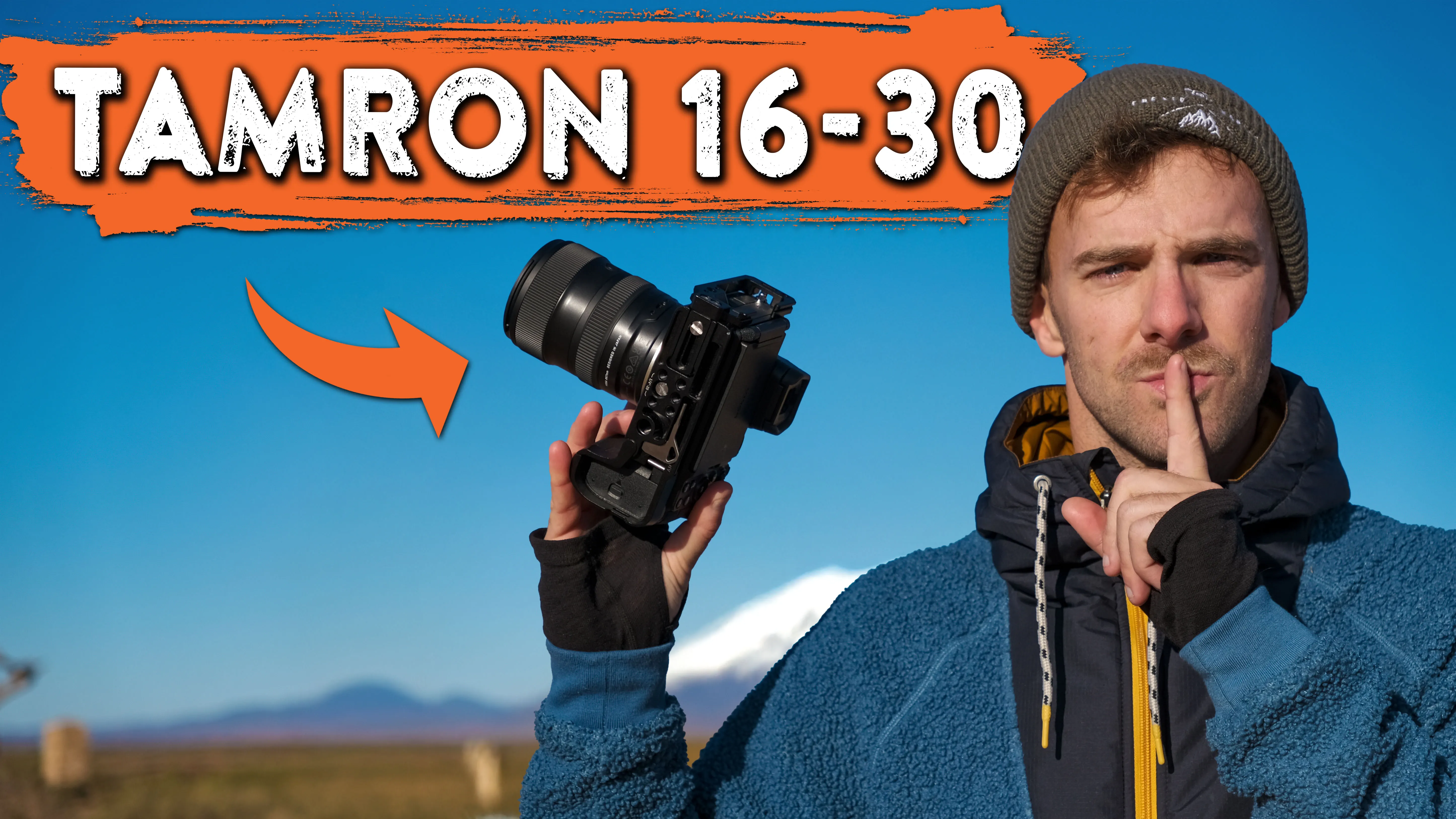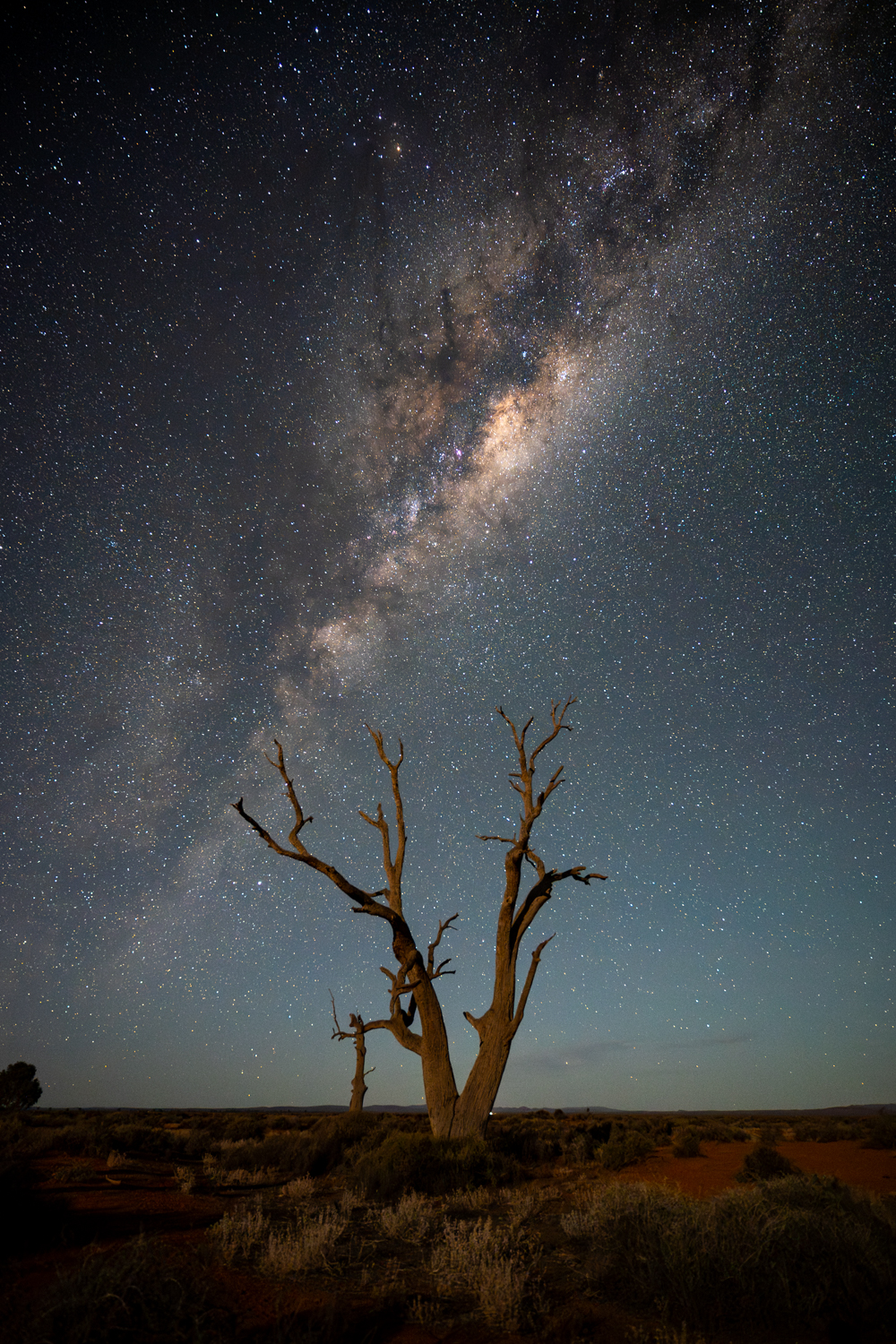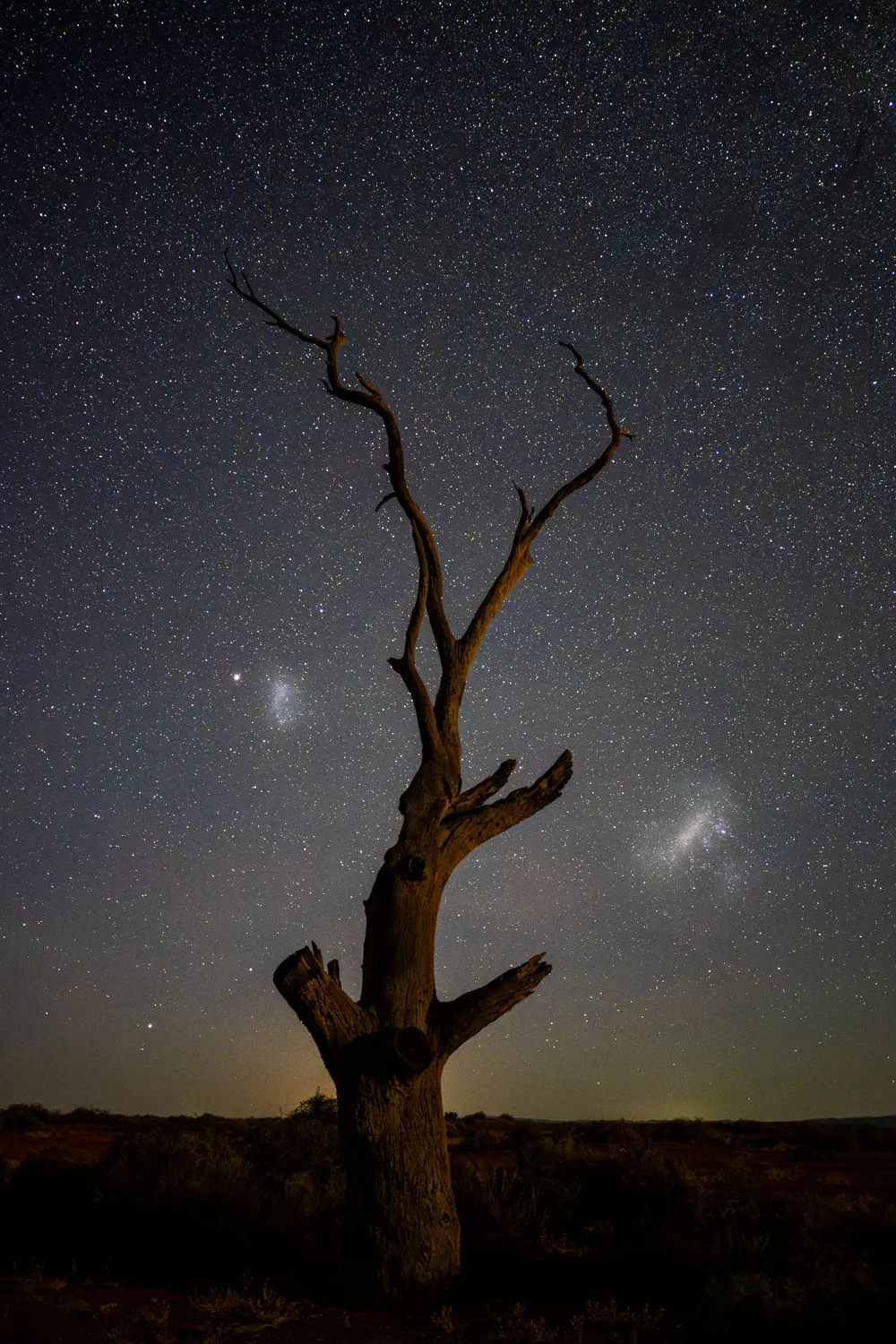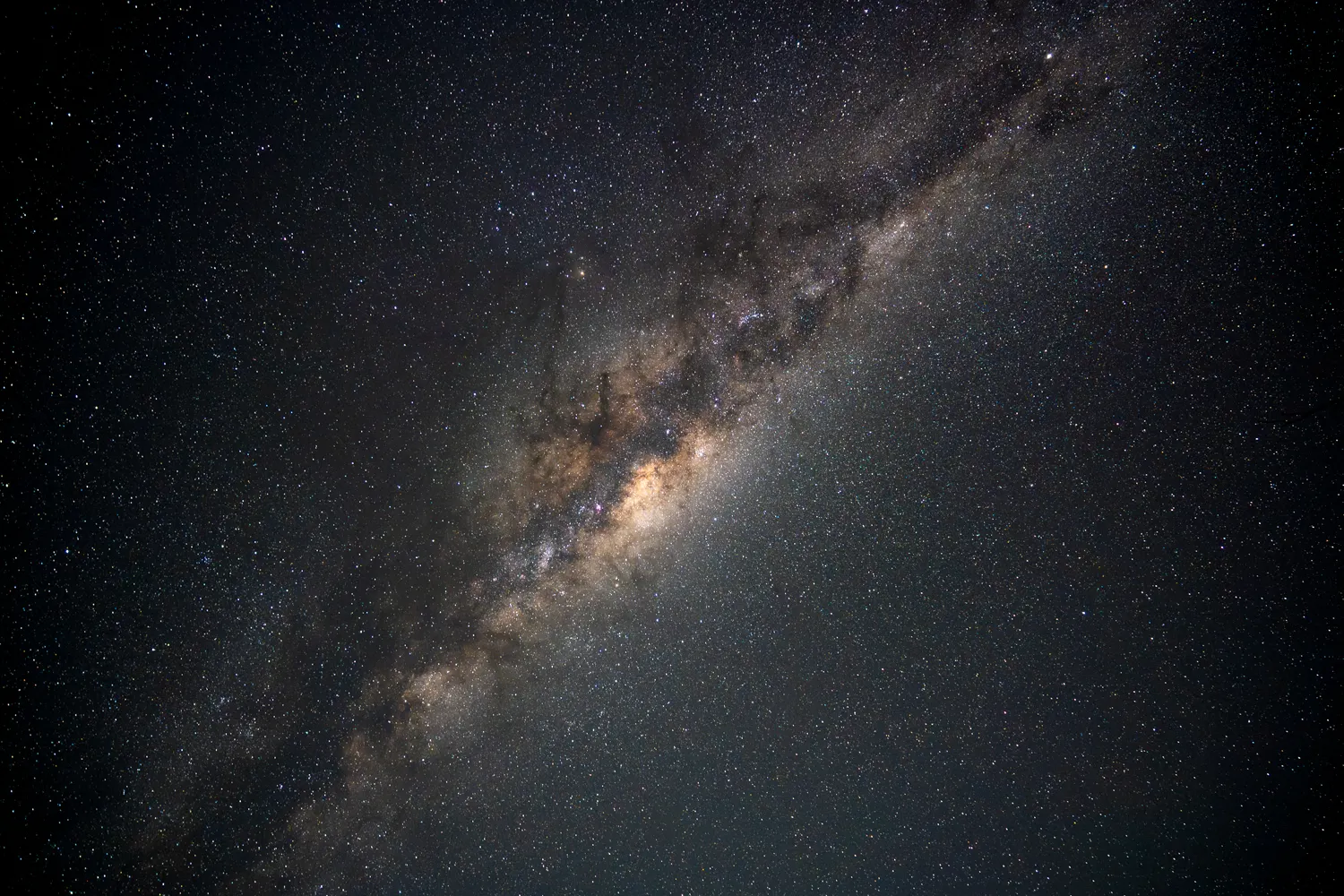Tamron 16–30mm f/2.8 Lens Review for Night Photography

Tamron 16-30mm F/2.8: NEW Secret Versatile Powerhouse!
The Tamron 16-30mm f/2.8 Di III VXD G2 is a newly announced ultra-wide-angle zoom lens designed for full-frame mirrorless cameras, available in both Nikon Z and Sony E mounts. From first glances, it looks like a new versatile king for all landscape and astrophotographers out there!
If you're looking for a wide-angle zoom for night and landscape photography? This real-world Tamron 16–30mm f/2.8 lens review covers how it performs under the Milky Way in Australia’s outback. (Includes FREE sample RAW files for download)
When testing a new lens, I don’t want to pixel peep in a studio. I want to get out in the real world. That’s why I took the Tamron 16–30mm f/2.8 lens deep into the Australian outback for a full night sky photography test.
This hands-on review will show how the lens performs on a Nikon Z6 III in extreme low-light conditions. I only used single exposures — no stacking, no blending, and no editing tricks. Just straight results.
📸 Scroll down for free RAW image downloads and the full YouTube video.
Tamron 16-30mm F2.8 essential facts:
- Focal Length: 16-30mm
- Maximum Aperture: f/2.8 constant
- Optical Construction: 16 elements in 12 groups
- Minimum Focus Distance: 0.19 meters
- Maximum Magnification: 0.21x
- Weight: 450 grams
- Filter Thread: 67mm
- Weather Sealing: Yes
- Autofocus Motor: VXD (Voice-coil eXtreme-torque Drive)
- Price: AUD 1799
Tamron Lens Quick Summary
At 16mm
- Excellent field of view for wide-angle Milky Way & Landscape shots
- Slight vignetting, common in third-party lenses
- Good star sharpness at 16 seconds
- Works well for single-exposure astrophotography
✅ Ideal for photographers starting out in night sky photography
At 30mm
- Noticeable light drop-off compared to f/1.8 primes (Obvious)
- ISO needed to be pushed higher - 6400
- Stars are slightly softer at 8.7 seconds
- Not the best for detailed astro work at longer focal lengths
⚠️ Still usable for single exposure, but not as crisp as a fast prime
Tamron 16–30mm f/2.8 for Night Photography
Let’s get honest—night photography is where gear gets exposed. Literally and figuratively.
I tested the Tamron 16–30mm f/2.8 under crystal-clear outback skies, where light pollution is minimal and stars blaze across the night. My goal? See how this lens handles real-world astrophotography conditions—no blending, no stacking, no tricks. Just single exposures, straight from the camera.
I started by scouting during dusk, marking my composition using a piece of iron cladding as a landmark. Once darkness fell, I navigated back with a head torch and began setting up. The moon added a layer of challenge—not ideal at 27%—but it was all part of testing this lens in difficult, realistic conditions.
At 16mm f/2.8, using PhotoPills’ NPF Rule, I was shooting up to 16 seconds safely on my Nikon Z6 III. That’s a solid single exposure time. The lens let in plenty of light wide open, and while there was noticeable vignetting at the edges, it’s expected with ultra-wides at f/2.8 and easily correctable in post.
What impressed me most was the single-image sharpness. I deliberately avoided foreground blending or long exposures—this was about pushing the lens to perform under beginner-level constraints. The Milky Way, the Large and Small Magellanic Clouds, even subtle star colour hues came through nicely with my Kelvin set to 4350.
Switching to 30mm, I noticed a drop in light-gathering performance—understandably, as longer focal lengths bring in less light—but 8 seconds was still usable based on NPF calculations.
I bumped ISO to 6400 and maintained f/2.8 across the range. While a fast prime like a 20mm f/1.8 will always outperform in terms of light intake, for a zoom lens, this Tamron holds its own. Especially when you're just starting out or prefer to keep things simple without complex tracking or exposure blending.
Night Photography Settings:
For this astrophotography test, I used:
- Camera: Nikon Z6 III
- Lens: Tamron 16–30mm f/2.8
- Focal Range: 16mm & 30mm
- Aperture: F/2.8
- ISO: 3200 @ 16mm & 6400 @ 30mm
- Shutter Speed: 16sec @ 16mm & 8sec @ 30mm
- Location: Outback South Australia
- App: PhotoPills for shutter timing
White balance was set at 4350K. All files were captured in RAW and are available for download below.

Real-World Tips from the Field:
- 16mm @ f/2.8 allows for long enough exposures to capture the Milky Way with sharp stars.
- Vignetting is present but manageable in RAW post-production.
- Sharpness wide open is better than expected, especially at 16mm.
- 30mm struggles a bit in low light compared to primes, but is still usable.
- A great option for beginners who want to shoot night skies without diving into complex editing.
Is the Tamron 16-30mm F2.8 Lens for You?
It's clear that every photographer loves brand new lenses, but who is this lens actually for? One rule I live by when looking at lenses is 'if you don't know if you want a lens or not, there is a good chance you probably don't need it.'
Wide-angle lenses take time to learn and understand how they work with your composition, subject, dead space, and overall basic understanding. However, if you're looking for a versatile zoom lens for both landscape and night photography, the Tamron 16–30mm f/2.8 is a solid choice.
Here’s why it stands out:
- Constant f/2.8 aperture across the range
- Great low-light ability at the wide end (16mm)
- Internal Zoom & Weather Sealed
- Lightweight and compact for travel
- Compatible with Nikon Z and Sony E-mount
Beginners who want to shoot the Milky Way without complex editing will love the results this lens delivers at 16mm.
Download Sample RAW Files – Free
Want to see the images for yourself?
No filters. No edits. These are straight out of the camera so you can zoom in and see exactly what the Tamron lens can (and can’t) do.

Conclusion On The New Tamron Lens
The Tamron 16-30mm f/2.8 Di III VXD G2 lens presents a promising option for photographers specialising in landscape and looking to begin their night photography journey.
Its combination of a versatile focal range, constant wide aperture, weather sealing, and compact design makes it a compelling choice for those seeking high performance in a portable package.
The Tamron 16–30mm f/2.8 lens:
- ✅ Performs very well for night sky images at 16mm
- ✅ A solid choice for beginner or travel astrophotographers
- ❌ Struggles slightly at 30mm for detailed astro work
- ❌ No AF/MF Switch on the lens itself
- ✅ USB-C on lens for future updates
- ✅ Will likely shine for daytime landscapes (coming soon)
If you're looking for a night photography lens for Nikon Z or Sony that also works for landscapes, this lens hits a sweet spot in price, performance, and portability.



